#OSIRIS-REx Sample Return
Explore tagged Tumblr posts
Text

OSIRIS-REx Sample Return
The sample return capsule from NASA’s OSIRIS-REx mission is seen shortly after touching down in the desert, Sunday, Sept. 24, 2023, at the Department of Defense's Utah Test and Training Range. The sample was collected from the asteroid Bennu in October 2020 by NASA’s OSIRIS-REx spacecraft.
Photo Credit: (NASA/Keegan Barber).
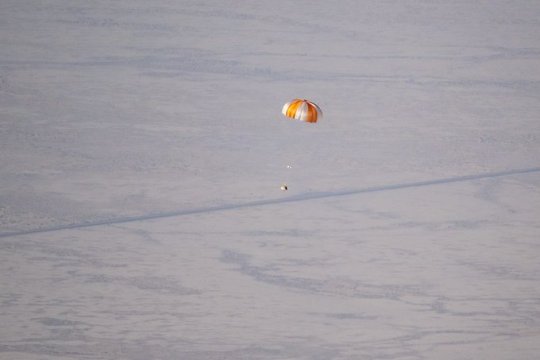
#NASA’s OSIRIS-REx mission#OSIRIS-REx Sample Return#NASA’s OSIRIS-REx spacecraft#asteroid bennu#nasa#nasa photos#nasa picture of the day#space#spaceship#spacecraft#its here
52 notes
·
View notes
Text
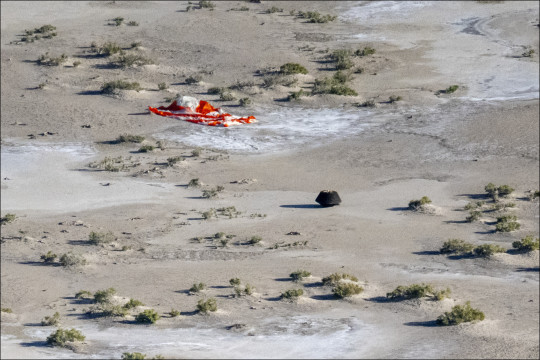

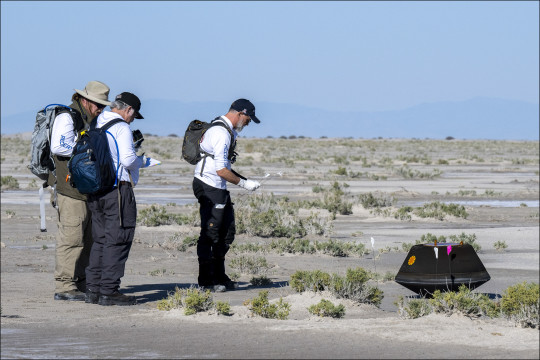
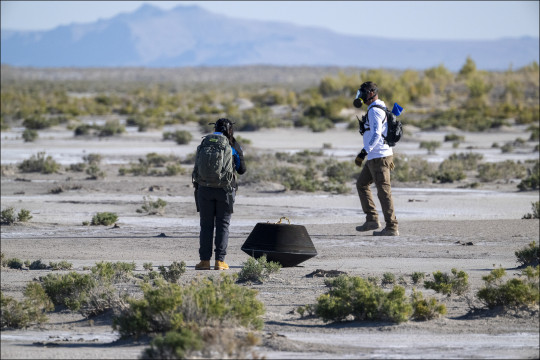
After a journey of nearly 3.9 billion miles, the OSIRIS-REx asteroid sample return capsule is back on Earth on Sunday, Sept. 24, 2023.
Teams perform the initial safety assessment—the first persons to come into contact with this hardware since it was on the other side of the solar system.
1K notes
·
View notes
Text
youtube
We're going to get a physical sample of an asteroid returned to the Earth this Sunday, September 24, 2023.
#osiris-rex#asteroid#asteroid bennu#sample return#tagsam#nasa#astronomy#planetary science#space#space exploration#space probe#september 24#nasa loves their acronyms#need another silly acronym#Youtube
13 notes
·
View notes
Text

Drew this during the sample return livestream! :D
#osiris rex#osiris#osiris rex sample return#space gijinka#gijinka#gijinka art#digital art#my art#artists on tumblr#nasa
9 notes
·
View notes
Text
A Reflection on OSIRIS-REx
In September, I was lucky enough to be part of the media team allowed to watch the recovery of NASA's OSIRIS-REx mission, and experience the excitement of this historic mission. I spent some time today, after seeing some of the sample in person, writing about it. Please feel free to give it a read, and give me a follow on Medium.
5 notes
·
View notes
Text
#NowPlaying: "Houston We Have a Podcast: Return of OREx: Part II" by NASA
#Nowplaying#Newmusic#SoundCloud#NASA#Johnson#space#center#jsc#OREx#OSIRIS-REx#asteroid#bennu#return#sample
0 notes
Text
0 notes
Text

0 notes
Video
OSIRIS-REx Sample Return (NHQ202309240001) by NASA HQ PHOTO Via Flickr: The sample return capsule from NASA’s OSIRIS-REx mission is seen shortly after touching down in the desert, Sunday, Sept. 24, 2023, at the Department of Defense's Utah Test and Training Range. The sample was collected from the asteroid Bennu in October 2020 by NASA’s OSIRIS-REx spacecraft. Photo Credit: (NASA/Keegan Barber)
#Asteroid Sample Return#Origins Spectral Interpretation Resource Identification Security-Regolith Explorer (OSIRIS-REx)#Utah#Utah Test and Training Range#Origins Spectral Interpretation Resource Identification Security#Dugway#UT#NASA#Keegan Barber#flickr
1 note
·
View note
Text
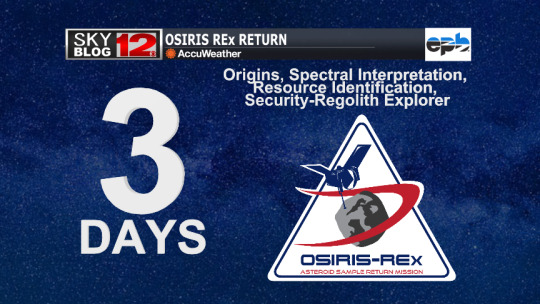
"NASA is inviting the public to take part in virtual activities ahead of the OSIRIS-REx (Origins, Spectral Interpretation, Resource Identification, and Security-Regolith Explorer) asteroid sample return mission. Members of the public can register to attend the sample return virtually."
#OSIRIS-REx#Origins#Spectral Interpretation#Resource Identification#and Security-Regolith Explorer#asteroid sample return
0 notes
Video
youtube
2025 February 12
Asteroid Bennu Holds the Building Blocks of Life Video Credit: Data: NASA, SVS, U. Arizona, CSA, York U., MDA; Visualizer: Kel Elkins (lead, SVS); Text: Ogetay Kayali (Michigan Tech U.)
Explanation: What can a space rock tell us about life on Earth? NASA's OSIRIS-REx spacecraft made a careful approach to the near-Earth asteroid 101955 Bennu in October of 2020 to collect surface samples. In September 2023, the robotic spaceship returned these samples to Earth. A recent analysis has shown, surprisingly, that the samples contained 14 out of the 20 known amino acids that are the essential building blocks of life. The presence of the amino acids re-introduces a big question: Could life have originated in space? However, the protein building blocks themselves held another surprise -- they contained an even mixture of left-handed and right-handed amino acids -- in contrast to our Earth which only has left-handed ones. This raises another big question: Why does life on Earth have only left-handed amino acids? Research on this is sure to continue.
∞ Source: apod.nasa.gov/apod/ap250212.html
88 notes
·
View notes
Text
wow the proposed NASA budget is fucking dire
fuck science and technology let's cut all that nerd shit and give money to human exploration so we can get a vanity pic of someone planting a flag on mars while claiming we "beat" china
nevermind that pretty much all of the major headline worthy accomplishments NASA has done in the last decade+ were from science and tech: perseverance and ingenuity (mars rover and helicopter), James Webb, asteroid redirection (DART), asteroid sampling and return (OSIRIS REX), literally probing the corona of the fucking Sun (Parker Solar Probe), etc
9 notes
·
View notes
Text
A sample collected from the 4.5-billion-year-old asteroid Bennu contains abundant water and carbon, NASA revealed on Wednesday, offering more evidence for the theory that life on Earth was seeded from outer space. The discovery follows a seven-year-round-trip to the distant rock as part of the OSIRIS-REx mission, which dropped off its precious payload in the Utah desert last month for painstaking scientific analysis. "This is the biggest carbon-rich asteroid sample ever returned to Earth," NASA administrator Bill Nelson said at a press event at the Johnson Space Center in Houston, where the first images of black dust and pebbles were revealed. Carbon accounted for almost five percent of the sample's total weight, and was present in both organic and mineral form, while the water was locked inside the crystal structure of clay minerals, he said.
Continue Reading.
112 notes
·
View notes
Text
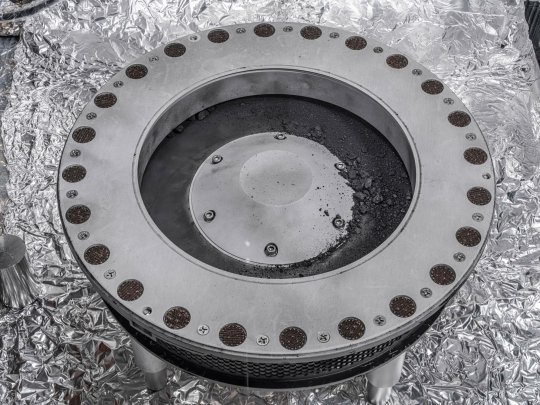
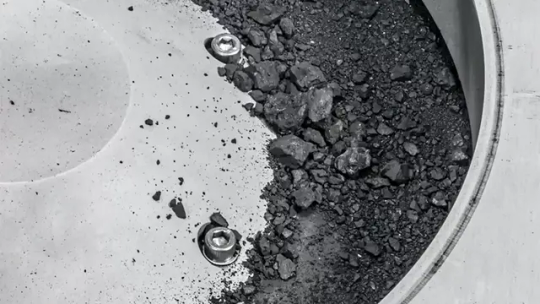
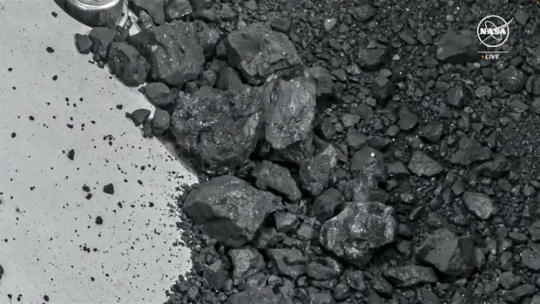
NASA’s Bennu Asteroid Sample
More carbon than expected and an abundance of water were found in the 4.5-billion-year-old asteroid sample returned to Earth by OSIRIS-REx. The two combined could mean that the building blocks for life on Earth might be locked in these rocks.
#NASA’s Bennu Asteroid Sample#OSIRIS-REx#nasa#nasa photos#nasa picture of the day#space#spaceship#spacecraft#solar system
78 notes
·
View notes
Text
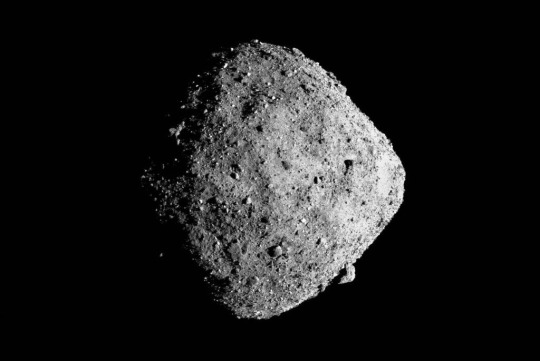
Dust from asteroid Bennu shows: Building blocks of life and possible habitats were widespread in our solar system
International study analyzes material from asteroid Bennu that was brought to Earth by NASA's OSIRIS-REx space mission
It took two years for NASA’s OSIRIS-REx space probe to return from asteroid Bennu before dropping off a small capsule as it flew past Earth, which was then recovered in the desert of the U.S. state of Utah on September 24, 2023. Its contents: 122 grams of dust and rock from asteroid Bennu. The probe had collected this sample from the surface of the 500-metre agglomerate of unconsolidated material in a touch-and-go maneuver that took just seconds. Since the capsule protected the sample from the effects of the atmosphere, it could be analyzed in its original state by a large team of scientists from more than 40 institutions around the world.
The partners in Germany were geoscientists Dr. Sheri Singerling, Dr. Beverley Tkalcec and Prof. Frank Brenker from Goethe University Frankfurt. They examined barely visible grains of Bennu using the transmission electron microscope of the Schwiete Cosmochemistry Laboratory, set up at Goethe University only a year ago with the support of the Dr. Rolf M. Schwiete Foundation, the German Research Foundation and the State of Hesse. Its goal: to reconstruct the processes that took place on Bennu’s protoplanetary parent body more than four billion years ago and ultimately led to the formation of the minerals that exist today. The Frankfurt scientists succeeded in doing this by analyzing the mineral grains’ exact structure and determining their chemical composition at the same time. They also carried out trace element tomography of the samples at accelerators such as DESY (Deutsches Elektronen-Synchrotron) in Hamburg.
“Together with our international partner teams, we have been able to detect a large proportion of the minerals that are formed when salty, liquid water – known as brine – evaporates more and more and the minerals are precipitated in the order of their solubility,” explains Dr. Sheri Singerling, who manages the Schwiete Cosmo Lab. In technical terms, the rocks that form from such precipitation cascades are called evaporites. They have been found on Earth in dried-out salt lakes, for example.
“Other teams have found various precursors of biomolecules such as numerous amino acids in the Bennu samples,” reports Prof. Frank Brenker. “This means that Bennu’s parent body had some known building blocks for biomolecules, water and – at least for a certain time – energy to keep the water liquid.” However, the break-up of Bennu’s parent body interrupted all processes very early on and the traces that have now been discovered were preserved for more than 4.5 billion years.
“Other celestial bodies such as Saturn's moon Enceladus, or the dwarf planet Ceres have been able to evolve since then and are still very likely to have liquid oceans or at least remnants of them under their ice shells,” says Brenker. “Since this means that they have a potential habitat, the search for simple life that could have evolved in such an environment is a focus of future missions and sample studies.”
OSIRIS-REx NASA’s Goddard Space Flight Center in Greenbelt, Maryland, provided overall mission management, systems engineering, and the safety and mission assurance for OSIRIS-REx. Dante Lauretta of the University of Arizona, Tucson, is the principal investigator. The university leads the science team and the mission’s science observation planning and data processing. Lockheed Martin Space in Littleton, Colorado, built the spacecraft and provided flight operations.
5 notes
·
View notes
Text
Touchdown! Alien Rock Returned from Billions of Miles Away!

After traveling billions of miles to Bennu and back, the OSIRIS-REx spacecraft released its sample capsule toward Earth’s atmosphere at 6:42 a.m. EDT (4:42 a.m. MDT). The spacecraft was 63,000 miles (102,000 kilometers) from Earth’s surface at the time – about one-third the distance from Earth to the Moon.
Traveling at 27,650 mph (44,500 kph), the capsule pierced the atmosphere at 10:42 a.m. EDT (8:42 a.m. MDT), off the coast of California at an altitude of about 83 miles (133 kilometers). Within 10 minutes, it landed on the military range. Along the way, two parachutes successfully deployed to stabilize and slow the capsule down to a gentle 11 mph (18 kph) at touchdown
“The returned samples collected from Bennu will help scientists worldwide make discoveries to better understand planet formation and the origin of organics and water that led to life on Earth, as well as benefit all of humanity by learning more about potentially hazardous asteroids”
After years of anticipation and hard work by NASA’s OSIRIS-REx (Origins, Spectral Interpretation, Resource Identification and Security – Regolith Explorer) team, a capsule of rocks and dust collected from asteroid Bennu finally is on Earth. It landed at 8:52 a.m. MDT (10:52 a.m. EDT) on Sunday, in a targeted area of the Department of Defense’s Utah Test and Training Range near Salt Lake City.
Within an hour and a half, the capsule was transported by helicopter to a temporary clean room set up in a hangar on the training range, where it now is connected to a continuous flow of nitrogen.
Getting the sample under a “nitrogen purge,” as scientists call it, was one of the OSIRIS-REx team’s most critical tasks today. Nitrogen is a gas that doesn’t interact with most other chemicals, and a continuous flow of it into the sample container inside the capsule will keep out earthly contaminants to leave the sample pure for scientific analyses.
76 notes
·
View notes